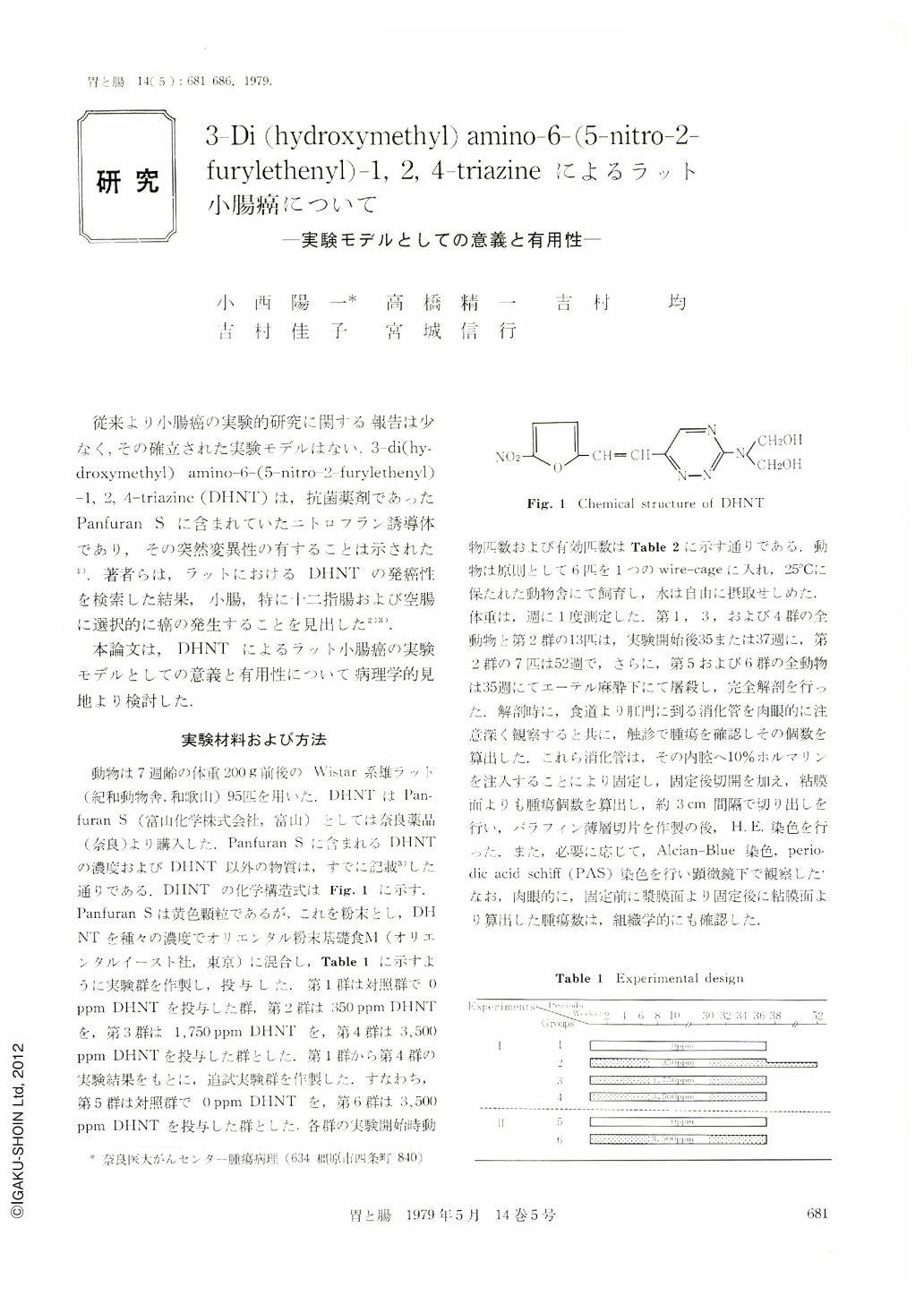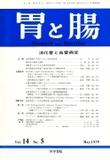Japanese
English
- 有料閲覧
- Abstract 文献概要
- 1ページ目 Look Inside
従来より小腸癌の実験的研究に関する報告は少なく,その確立された実験モデルはない.3-di(hydroxymethyl)amino-6-(5-nitro-2-furylethenyl)-1,2,4-triazine(DHNT)は,抗菌薬剤であったPanfuran Sに含まれていたニトロフラン誘導体であり,その突然変異性の有することは示された1).著者らは,ラットにおけるDHNTの発癌性を検索した結果,小腸,特に十二指腸および空腸に選択的に癌の発生することを見出した2)3).
本論文は,DHNTによるラット小腸癌の実験モデルとしての意義と有用性について病理学的見地より検討した.
In the present experiment, small intestinal carcinomas of rats induced by 3-di (hydroxymethyl) amino-6-(5-nitro-2-furylethenyl)-1,2,4-triazine (DHNT) were evaluated pathologically as an animal model. Small intestinal carcinomas, duodenal and jejunal ones, were selectively produced in high incidences.
A total of 34 carcinomas were analysed to obtain the relationship between macroscopic and histological types. Macroscopically, they were classified into 4 types as 21 of 34 protruded, 7 of 34 flatly-protruded, 1 of 34 subsided, and 5 of 34 down-growth types. Histologically, they were tubular adenocarcinomas which were seen in 26 of 34 papillary adenocarcinomas seen in 7 of 34, and signet ring cell carcinoma seen in 1 of 34. Eighteen of 26 tubular adenocarcinomas were seen in protruded, 4 of 26 in flatly-protruded, 1 of 26 in subsided, and 3 of 26 in down-growth types. Three of 7 papillary adenocarcinomas were seen in protruded, 2 of 7 in flatly-protruded, and 2 of 7 in down-growth types. Only one signet ring cell carcinoma was seen in flatly-protruded type. No poorly differentiated cell adenocarcinomas were developed.
These results indicate that small intestinal carcinomas of rats induced by DHNT provide a useful experimental model for studying small intestinal carcinoma and/or as a positive control for that of stomach carcinomas since intestinalized stomach mucosa plays an important roll in the development of intestinal types of stomach carcinomas.

Copyright © 1979, Igaku-Shoin Ltd. All rights reserved.


